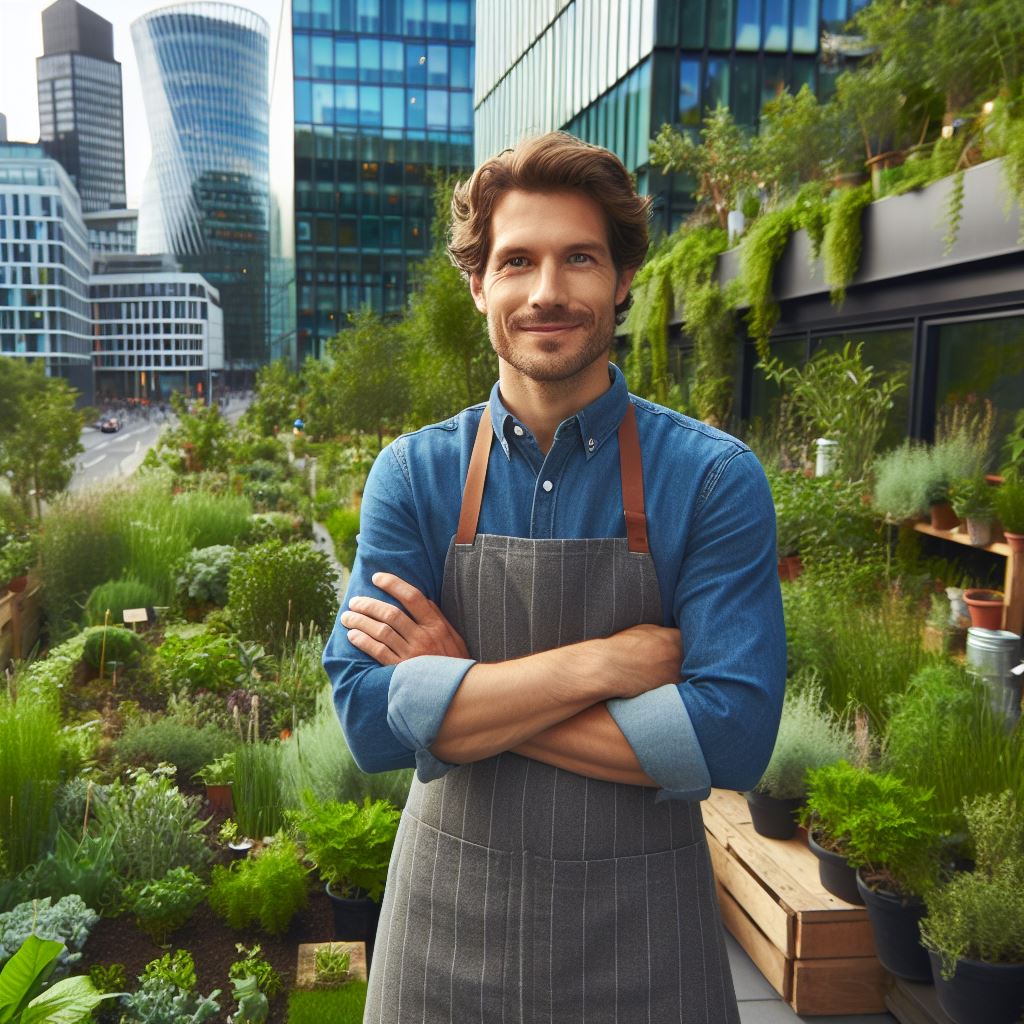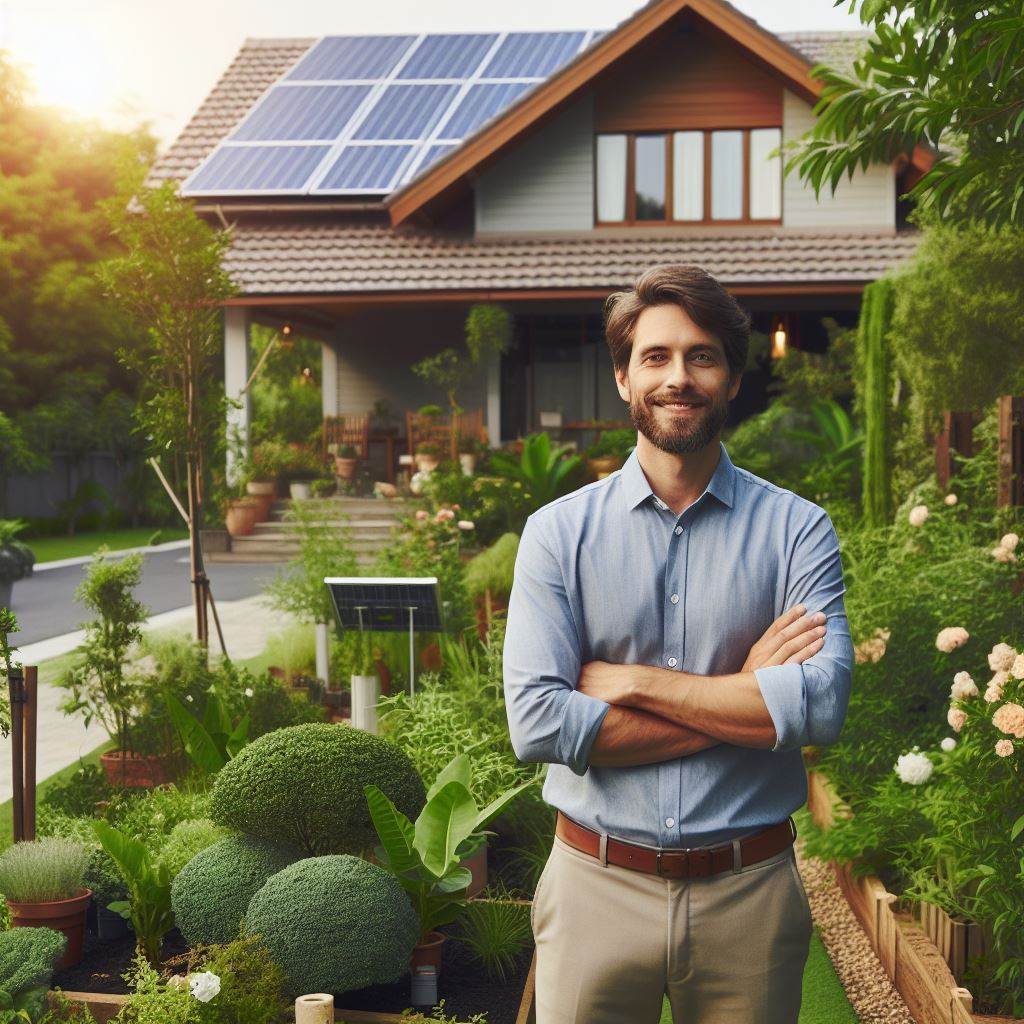Introduction
Sustainable landscaping refers to the practice of designing and maintaining landscapes in an environmentally friendly and resource-efficient manner.
It aims to minimize the negative impacts of urban development on the environment.
Sustainable landscaping plays a crucial role in urban developments as it enhances the overall quality of life, promotes biodiversity, conserves water, and reduces pollution.
Moreover, it contributes to the creation of healthier and more resilient communities.
By implementing sustainable landscaping practices, urban developments can mitigate climate change, improve air and water quality, and increase energy efficiency.
It also helps in preserving natural habitats and protects the ecosystem.
Furthermore, sustainable landscaping reduces the need for harmful pesticides and fertilizers, which can have adverse effects on human health and the environment.
Overall, incorporating sustainable landscaping in urban developments is essential for creating greener, more sustainable, and healthier cities.
It ensures the well-being of both current and future generations and provides a harmonious interaction between humans and nature.
By adopting sustainable landscaping practices, urban developments can have a positive impact on the environment while enhancing the aesthetic appeal and functionality of their landscapes.
Benefits of Sustainable Landscaping in Urban Developments
Sustainable landscaping in urban developments not only benefits the environment but also brings economic and social advantages. Let’s delve deeper into each of these benefits.
Economic benefits
Incorporating sustainable landscaping practices in urban developments yields various economic advantages.
Firstly, it increases property value.
The presence of well-designed green spaces and eco-friendly features enhances the overall appeal of properties, attracting potential buyers and leading to higher prices.
Furthermore, sustainable landscaping helps reduce maintenance costs.
By utilizing native plants and implementing water-efficient irrigation systems, developers can significantly cut down on the need for excessive watering, pruning, and fertilizing.
This reduces the overall maintenance expenses, making it more cost-effective for property owners.
Moreover, sustainable landscaping promotes water and energy savings.
Efficient irrigation techniques, use of rainwater harvesting systems, and incorporation of energy-saving features like solar lighting contribute to reduced utility bills for property owners and residents.
Environmental benefits
The environmental benefits of sustainable landscaping in urban developments are profound.
Firstly, it conserves water resources.
By using smart irrigation systems and planting drought-tolerant vegetation, excessive water usage is minimized, contributing to water conservation in an era of increasing water scarcity.
Additionally, sustainable landscaping helps reduce stormwater runoff.
Green infrastructures, such as permeable surfaces, rain gardens, and bioswales, absorb rainwater, preventing it from becoming runoff.
This reduces the strain on municipal stormwater systems, minimizes flooding risks, and helps recharge groundwater.
Moreover, sustainable landscaping enhances air quality.
Trees, plants, and green spaces act as natural air filters by absorbing pollutants and releasing oxygen.
This reduces air pollution, mitigates the urban heat island effect, and creates a healthier environment for urban dwellers.
Furthermore, sustainable landscaping plays a crucial role in biodiversity preservation.
By incorporating native plants, providing food and shelter for wildlife, and creating habitats, urban developments can support local biodiversity and contribute to the conservation of species.
Social benefits
In addition to the economic and environmental advantages, sustainable landscaping also provides numerous social benefits.
Firstly, it enhances aesthetics and livability.
Well-designed green spaces, parks, and gardens contribute to the beauty and visual appeal of urban areas, creating a more vibrant and enjoyable environment for residents and visitors alike.
Moreover, sustainable landscapes create recreational spaces.
Parks with amenities such as playgrounds, sports facilities, and walking trails encourage physical activity, promote social interactions, and enhance community well-being.
Furthermore, sustainable landscapes contribute to the physical and mental well-being of urban dwellers.
Access to green spaces, parks, and nature has been linked to improved physical health, reduced stress levels, increased cognitive functioning, and enhanced mental well-being.
Sustainable landscaping ensures that urban residents have access to these vital benefits.
In fact, sustainable landscaping in urban developments generates multiple benefits that span economic, environmental, and social aspects.
It adds value to properties, reduces maintenance costs, conserves water resources, mitigates stormwater runoff, improves air quality, preserves biodiversity, enhances aesthetics, creates recreational spaces, and promotes physical and mental well-being.
Incorporating sustainable landscaping practices is therefore essential for creating healthy, sustainable, and livable urban environments.
Read: The Rise of E-Commerce and 2024 Warehouse CRE

Principles of Sustainable Landscaping in Urban Developments
Use of native and drought-resistant plants
One of the fundamental principles of sustainable landscaping in urban developments is the use of native and drought-resistant plants.
By selecting plant species that are adapted to the local climate and soil conditions, water consumption can be significantly reduced, avoiding the need for excessive irrigation.
Efficient irrigation systems
In addition to using appropriate plant species, efficient irrigation systems should be employed to minimize water wastage.
Smart irrigation technologies, such as weather-based controllers and drip irrigation, can ensure that water is delivered directly to the plant roots, reducing evaporation and runoff.
Rainwater harvesting techniques
Rainwater harvesting techniques are another important aspect of sustainable landscaping.
These techniques involve collecting and storing rainwater for future use in irrigation or other non-potable applications.
By capturing and utilizing rainwater, the demand for freshwater resources can be reduced.
Minimization of chemical inputs
To minimize the environmental impact of landscaping practices, the minimization of chemical inputs is crucial.
This involves limiting the use of chemical fertilizers, herbicides, and pesticides, which can contaminate water sources and harm the surrounding ecosystem.
Instead, organic and biological alternatives can be utilized to maintain plant health and control pests.
Integrated pest management
Integrated pest management is an eco-friendly approach that focuses on preventing and managing pests through a combination of biological, cultural, and mechanical measures.
By promoting natural pest predators, implementing proper sanitation practices, and utilizing physical barriers, the reliance on chemical pesticides can be greatly reduced.
Use of permeable paving materials
The use of permeable paving materials is another sustainable landscaping practice in urban developments.
These materials allow rainwater to slowly infiltrate into the ground, replenishing the groundwater table and reducing stormwater runoff.
Permeable pavements also help to mitigate urban heat island effects by reducing surface temperatures.
Implementation of green roofs and walls
Lastly, the implementation of green roofs and walls can enhance the sustainability of urban landscapes.
Green roofs involve the installation of vegetation layers on building rooftops, providing thermal insulation, reducing stormwater runoff, and improving air quality.
Green walls, on the other hand, are vertical landscapes that can provide similar benefits while also beautifying the urban environment.
In essence, sustainable landscaping in urban developments requires the application of various principles.
By using native and drought-resistant plants, efficient irrigation systems, rainwater harvesting techniques, minimizing chemical inputs, implementing integrated pest management, utilizing permeable paving materials, and incorporating green roofs and walls, urban landscapes can become more environmentally friendly, resilient, and aesthetically pleasing.
Read: Reducing Carbon Footprint in Office Spaces
Challenges and Solutions in Implementing Sustainable Landscaping
Urban developments, while crucial for accommodating growing populations, often face numerous challenges in incorporating sustainable landscaping practices.
In this section, we delve into the hurdles encountered and the innovative solutions employed in the pursuit of sustainable urban green spaces.
Limited Space in Urban Areas
One of the primary challenges is the scarcity of space.
Urban landscapes are defined by concrete jungles, leaving limited room for traditional landscaping.
The solution lies in embracing vertical gardens.
By utilizing vertical spaces on building facades and walls, urban areas can transform into lush, green environments.
This not only enhances aesthetic appeal but also maximizes green coverage without encroaching on precious horizontal space.
Soil Quality Issues
Urban soils often suffer from contamination and degradation.
Soil quality directly impacts plant health and overall sustainability.
Mitigating this issue involves employing advanced soil restoration techniques.
Innovative solutions, such as bio-remediation and soil amendment technologies, can revive and fortify the soil, ensuring a conducive environment for plant growth.
Enforcement of Sustainability Regulations
Despite the existence of sustainability regulations, enforcement can be a significant hurdle.
To overcome this, communities are engaging in collaborative efforts with local authorities and environmental agencies.
Regular audits and awareness campaigns are conducted to ensure that landscaping projects adhere to established sustainability guidelines.
This proactive approach fosters a culture of accountability and compliance.
Community Engagement and Education
Building sustainable urban landscapes requires the active involvement of the community.
Educational programs are pivotal in raising awareness about the benefits of sustainable landscaping.
Workshops, seminars, and outreach initiatives empower residents to participate in communal green efforts, fostering a sense of shared responsibility for the environment.
Collaboration with Landscape Professionals
The collaboration between city planners, architects, and landscape professionals is essential for successful sustainable landscaping.
Integrating green infrastructure into urban planning processes ensures a harmonious blend of functionality and aesthetics.
Landscape architects play a key role in designing eco-friendly spaces that align with the city’s overall vision.
Innovative Techniques
Innovation takes center stage in overcoming urban landscaping challenges.
Techniques like vertical gardens and community gardens demonstrate how creativity can thrive in constrained spaces.
Vertical gardens not only add a touch of green to the urban landscape but also contribute to improved air quality.
Community gardens promote a sense of community ownership, providing residents with green spaces for leisure and cultivation.
Essentially, addressing the challenges of sustainable landscaping in urban developments necessitates a holistic approach.
By embracing innovative solutions, fostering community engagement, and enforcing regulations, cities can pave the way for green, resilient, and sustainable urban landscapes.
Read: Mixed-Use Properties: The 2024 CRE Trend
Successful Examples of Sustainable Landscaping in Urban Developments
In the pursuit of creating environmentally conscious urban spaces, several cities have embraced innovative sustainable landscaping practices.
These case studies serve as beacons of inspiration, showcasing how thoughtful design can harmonize urban development with nature.
The High Line, New York City
Nestled above the bustling streets of Manhattan, the High Line stands as an epitome of successful sustainable landscaping.
This elevated park, built on a disused railway track, incorporates native plantings, green roofs, and permeable surfaces.
Its innovative design not only enhances biodiversity but also reduces stormwater runoff, creating a resilient green oasis in the heart of the city.
Vauban, Freiburg, Germany
Vauban, a sustainable urban development in Freiburg, Germany, emphasizes eco-friendly practices, including sustainable landscaping.
With car-free zones, extensive green spaces, and community gardens, Vauban showcases the integration of nature into the urban fabric.
This approach is adaptable to different climates, offering a model for cities worldwide seeking sustainable urban planning.
Singapore’s Bishan-Ang Mo Kio Park
Singapore, known for its commitment to sustainability, boasts the Bishan-Ang Mo Kio Park as a shining example.
This park incorporates sustainable water management through naturalized riverbanks and constructed wetlands.
The park’s landscaping not only provides recreational spaces but also mitigates flooding risks, demonstrating the versatility of sustainable practices in water-rich climates.
Malmo Green Roof, Sweden
Malmo, Sweden, has taken sustainable landscaping to new heights—literally.
The city encourages green roofs, exemplified by the Augustenborg district. Green roofs reduce energy consumption, mitigate urban heat islands, and enhance biodiversity.
This case study underscores the adaptability of sustainable landscaping practices in colder climates, proving that green initiatives can thrive in diverse environmental conditions.
These examples illustrate the adaptability and effectiveness of sustainable landscaping in urban developments.
By integrating nature into city planning, these projects offer scalable models for creating resilient, eco-friendly urban spaces worldwide, regardless of climate or region.
As cities continue to grapple with the challenges of urbanization, these success stories provide a roadmap towards a greener, more sustainable future.
Read: Eco-Friendly Materials in Construction Today
Conclusion
Sustainable landscaping plays a vital role in urban developments, offering numerous benefits.
By prioritizing sustainability, developers and individuals can create healthier and more environmentally-friendly communities.
The importance of sustainable landscaping cannot be overstated.
It helps mitigate the effects of climate change, improves air and water quality, provides habitat for wildlife, and reduces energy consumption.
Moreover, sustainable landscaping enhances the overall quality of life in urban areas.
It creates green spaces for recreation, promotes mental well-being, and fosters community engagement.
Encouraging developers and individuals to prioritize sustainability is crucial.
Financial incentives and regulation can drive the adoption of sustainable practices, ensuring that all future urban developments consider environmental impact.
Looking ahead, sustainable landscaping and urban developments offer promising prospects.
With advancements in technology and increased awareness, we can expect innovative solutions to emerge.
Developments may incorporate green roofs, vertical gardens, and urban agriculture, further integrating nature into the urban fabric.
Smart irrigation systems and renewable energy sources will become more commonplace, reducing environmental stress.
In the end, sustainable landscaping is key to the sustainable development of our cities.
It is an investment in the future, creating greener, healthier, and more resilient urban environments for generations to come.




